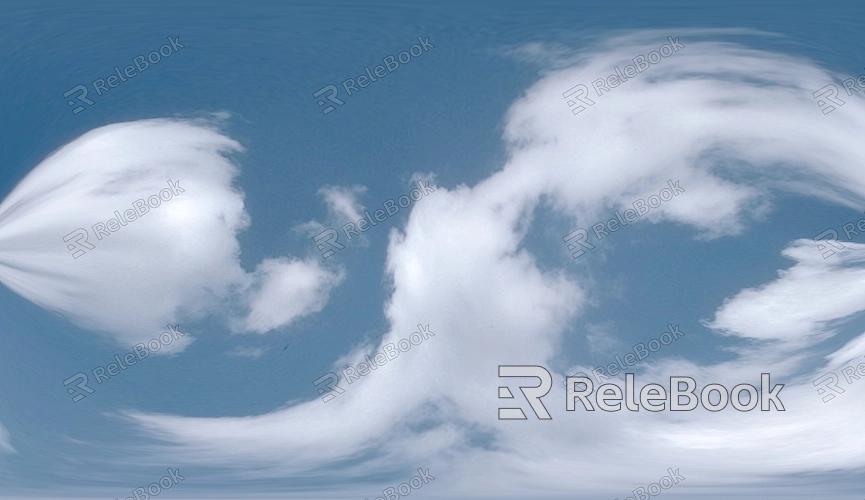What Is the Best HDR Sky Texture for 3D Rendering?
HDR sky textures play a critical role in lighting a 3D environment, significantly influencing the realism and overall rendering quality of a scene. Designers often use HDR skies to enhance lighting and reflection in various projects, whether for architectural visualization, automotive rendering, or virtual environment creation. Most 3D software supports the integration of HDR sky textures, which leads designers to ask, “What’s the best HDR sky texture for 3D rendering?” This article will explore key factors to consider when selecting HDR sky textures to help designers find the best match for their projects.

Resolution of the HDR Sky Texture
Resolution is a major factor when choosing an HDR sky texture. The higher the resolution, the clearer the details in the texture, which is particularly important for panoramic scenes or those with reflective surfaces. Higher-resolution HDR images deliver more realistic lighting and reflections. Standard resolutions include 2K, 4K, and 8K, with even higher options available. The right resolution depends on the project’s needs and hardware limitations. Large-scale, complex scenes may benefit from an 8K HDR sky, offering maximum detail, while smaller scenes or mobile rendering can use lower resolutions to reduce rendering times and computational load.
High resolution: Ideal for fine-detail rendering and high-definition displays.
Low resolution: More suitable for real-time rendering and optimizing performance on mobile devices.
Light Source Type and Direction
Beyond providing ambient lighting, HDR sky textures can also simulate natural light sources like sunrise, sunset, or overcast skies. When selecting a texture, designers should consider the directionality of the light source, as this will impact shadows and lighting distribution in the scene. For example, sunset HDR skies can create soft lighting and warm tones for exterior architectural visualizations, while midday skies can provide sharp contrasts and bright effects.
Sunrise/Sunset: Great for creating emotional and dramatic renders.
Midday lighting: Suited for bright product or architectural showcases.
Dynamic Range Breadth
A key advantage of HDR imagery is its ability to capture a wide range of brightness levels. The broader the dynamic range, the more detail can be retained in both the highlights and shadows. For high-contrast scenes like outdoor automotive renders or architectural visualizations in direct sunlight, a wide dynamic range will deliver richer visual results. On the other hand, a narrower range may be more appropriate for indoor or low-light scenes. When choosing HDR sky textures, designers should evaluate how much dynamic range their project requires.
Wide dynamic range: Works best for outdoor, bright scenes.
Narrow dynamic range: More appropriate for indoor, soft-light scenarios.
Color Representation and Temperature
HDR sky textures exhibit different color temperatures and hues, ranging from cool tones with blue skies and clouds to warm sunset tones. Choosing the right color scheme can dramatically enhance the mood of the scene. For instance, a cool-toned HDR sky works well for rendering modern architectural designs, while warm-toned HDR skies can evoke a more natural or rustic ambiance.
Cool tones: Ideal for high-tech or modern environments.
Warm tones: Suitable for natural, outdoor, or cozy atmospheres.

Editability and Customization
Designers frequently need to adjust the parameters of an HDR sky texture to meet the specific requirements of their scenes. In software like Cinema 4D or Blender, it’s possible to tweak brightness, contrast, and saturation settings to achieve the desired lighting effect. Some designers may even create custom HDR sky textures by using photography or generating them via software to craft a unique lighting environment tailored to the project’s needs.
Adjustable HDR textures: Flexible for different projects.
Custom HDR textures: Perfect for designers seeking a personalized effect.
File Size and Performance Optimization
HDR sky textures are often large files due to their high resolution, which can increase the rendering workload. When selecting a texture, designers should consider the impact of file size on rendering times, particularly in real-time engines like Unity or Unreal Engine. Optimized HDR files can provide high-quality visuals while minimizing resource consumption and improving rendering efficiency.
Large-scale scenes: Use compressed HDR textures to save resources.
Real-time rendering: Balance file size with visual fidelity to optimize performance.
Free Resources and Commercial Libraries
There are many platforms offering free HDR sky textures, such as HDRI Haven and Poly Haven, which have seen significant quality improvements. Commercial texture libraries, on the other hand, often provide professionally optimized and categorized HDR skies, which may be better suited for high-quality projects with specific stylistic needs. Designers can choose the right platform based on budget constraints and project requirements.
Free resources: Ideal for personal projects or budget-conscious designers.
Commercial libraries: Best for high-end projects requiring precision and quality.
Software Compatibility
Different 3D software supports HDR sky textures in varying ways. For example, Blender allows designers to directly load HDR files under “environment lighting,” while in 3ds Max, the best results are achieved by using render engines like V-Ray or Arnold. Understanding how each software handles HDR textures is important to achieving optimal results in your project.
Blender and Cinema 4D: Easy to load and apply HDR textures, suitable for beginners.
3ds Max and Maya: Work best when combined with render engines for more advanced setups.
In this article, we’ve explored several factors to consider when selecting the best HDR sky texture for 3D rendering, including resolution, light source type, dynamic range, color representation, and performance optimization. For 3D designers, finding the right HDR sky texture not only enhances the visual quality of their work but also optimizes rendering time. If you’re in search of high-quality HDR images, 3D textures, SketchUp models, or 3ds Max models, Relebook is an excellent resource. Downloading textures and models from Relebook and importing them into 3D Max can significantly improve the quality of your projects.

